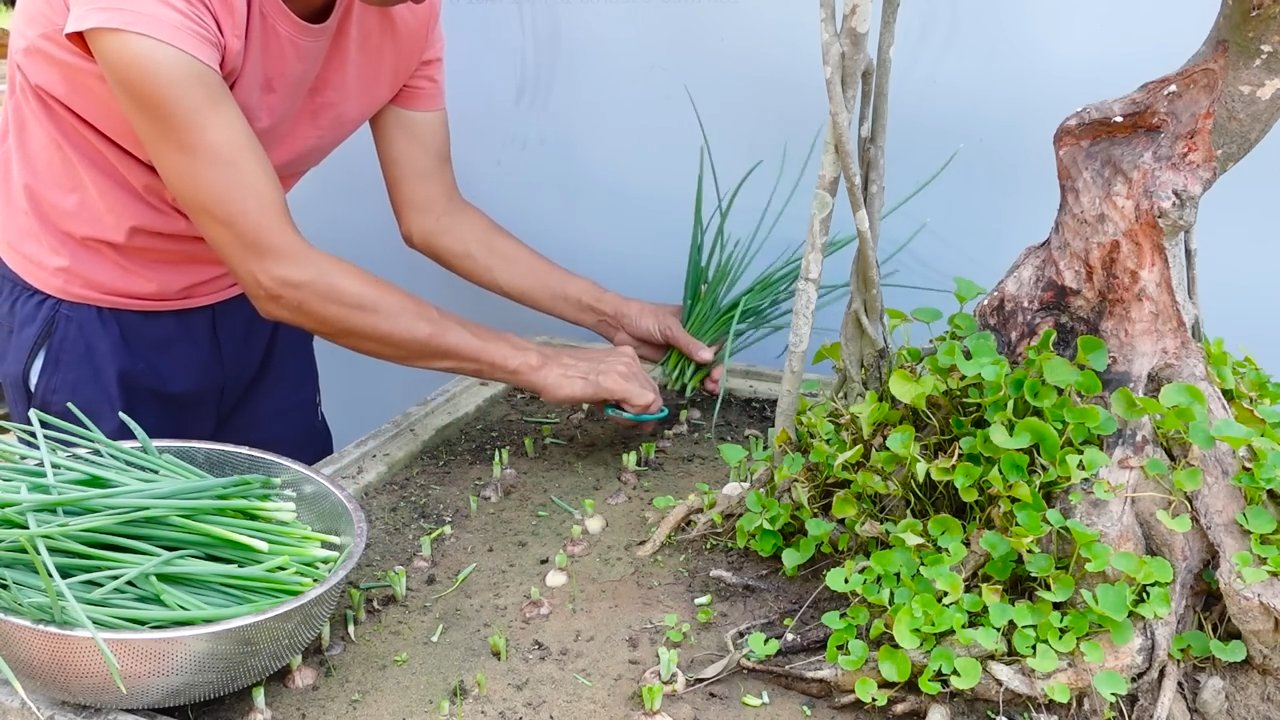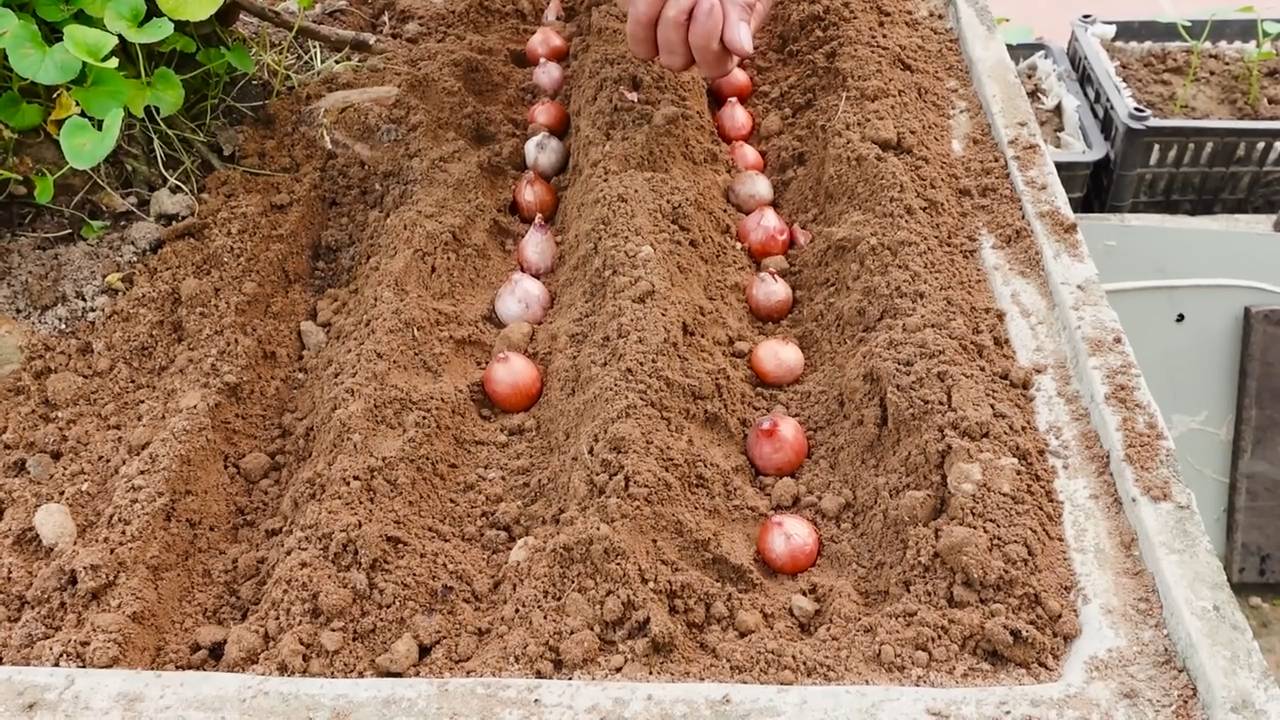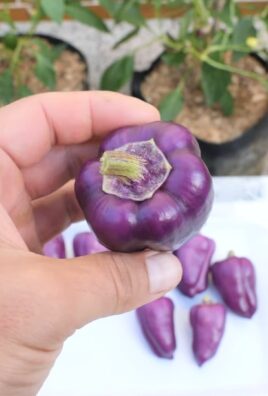Growing green onions urban style is easier than you think, and I’m here to show you how! Forget those expensive grocery store runs for a few sprigs of scallions. Imagine having a constant supply of fresh, flavorful green onions right at your fingertips, ready to elevate your culinary creations.
For centuries, cultivating food in urban environments has been a necessity and a source of pride. From ancient rooftop gardens to modern-day community plots, the desire to connect with nature and grow our own food has always been strong. Green onions, in particular, have a rich history in Asian cuisine, adding a vibrant touch to countless dishes.
But why should you embrace the art of growing green onions urban style? Well, besides the obvious cost savings, it’s incredibly rewarding! It’s a fantastic way to reduce your carbon footprint, learn about the growing process, and enjoy the unparalleled taste of freshly harvested produce. Plus, let’s be honest, there’s something incredibly satisfying about snipping off a few green onions that you nurtured yourself. This DIY guide will provide you with simple, effective tricks and hacks to ensure your urban green onion garden thrives, even if you have limited space or experience. Get ready to unleash your inner urban farmer!

Regrowing Green Onions: An Urban Gardener’s Dream
Hey there, fellow plant enthusiasts! Ever find yourself tossing the root ends of green onions after using the green parts in your cooking? Stop right there! You’re throwing away a fantastic opportunity to have a never-ending supply of fresh green onions right in your own home. It’s super easy, incredibly rewarding, and perfect for even the tiniest urban spaces. I’m going to walk you through everything you need to know to regrow green onions like a pro.
What You’ll Need
Before we dive in, let’s gather our supplies. The beauty of this project is that it requires minimal investment and uses things you probably already have around the house.
* Green Onions: Obviously! You’ll need the root ends of your green onions. Make sure they have at least an inch or two of the white part still attached, and the roots are intact.
* A Glass or Jar: Any small glass or jar will do. I like to use mason jars or even recycled glass containers from sauces or jams.
* Water: Tap water is perfectly fine.
* Potting Soil (Optional): While you can regrow green onions in just water, transplanting them to soil will give you a more robust and longer-lasting harvest.
* A Small Pot (Optional): If you plan to transplant, you’ll need a small pot with drainage holes.
* Scissors or a Knife: For trimming the green onions.
* A Sunny Spot: Green onions need sunlight to thrive. A windowsill or balcony is ideal.
Regrowing in Water: The Quick and Easy Method
This is the simplest method, perfect for beginners or anyone who wants a quick and easy way to get started.
1. Prepare the Green Onion Ends: Using your scissors or knife, trim the green onion stalks, leaving about 1-2 inches of the white part attached to the roots. Don’t throw away the green parts you cut off! Use them in your cooking.
2. Place in Water: Fill your glass or jar with enough water to cover the roots, but not so much that the white part of the onion is submerged. You want the roots to be in the water, but the white part should be mostly above the waterline to prevent rotting.
3. Find a Sunny Spot: Place the jar on a windowsill or in another location that receives plenty of sunlight. Green onions need at least 6 hours of sunlight per day to grow well.
4. Change the Water Regularly: This is crucial! Change the water every 1-2 days to prevent bacteria growth and keep the water fresh. This will also provide the green onions with the nutrients they need.
5. Watch Them Grow!: Within a few days, you’ll start to see new green shoots emerging from the top of the white part. It’s amazing how quickly they grow!
6. Harvest Your Green Onions: Once the green shoots are a few inches long, you can start harvesting them. Simply snip off the amount you need with your scissors. The green onions will continue to grow back, providing you with a continuous supply.
7. Maintain and Replenish: After a few weeks, you might notice the green onions slowing down their growth or becoming less vibrant. This is a sign that they’ve used up most of the nutrients in the water. You can either add a tiny drop of liquid fertilizer to the water (be very careful not to over-fertilize!) or start with fresh green onion ends.
Transplanting to Soil: For a Longer-Lasting Harvest
While regrowing in water is convenient, transplanting your green onions to soil will give them a more stable environment and allow them to grow larger and stronger. This method also tends to result in a longer-lasting harvest.
Preparing for Transplanting
1. Let the Roots Develop: Follow steps 1-5 of the “Regrowing in Water” method. Allow the green onion roots to develop for at least a week or two before transplanting. You want to see a good network of roots growing from the base.
2. Choose Your Pot: Select a small pot with drainage holes. The pot should be at least 4-6 inches in diameter to give the green onions enough room to grow.
3. Fill with Potting Soil: Fill the pot with a good quality potting soil. Avoid using garden soil, as it can be too heavy and compact for container gardening.
4. Moisten the Soil: Water the potting soil until it’s evenly moist, but not soggy.
The Transplanting Process
1. Make a Hole: Use your finger or a small tool to create a hole in the center of the pot, deep enough to accommodate the roots of the green onion.
2. Carefully Remove from Water: Gently remove the green onion from the water, being careful not to damage the roots.
3. Place in the Hole: Place the green onion in the hole, making sure the roots are spread out.
4. Cover with Soil: Gently fill the hole with potting soil, covering the roots. Leave the white part of the onion exposed.
5. Water Gently: Water the soil gently to help settle it around the roots.
6. Find a Sunny Spot: Place the pot in a sunny location that receives at least 6 hours of sunlight per day.
Caring for Your Transplanted Green Onions
1. Water Regularly: Water the green onions whenever the soil feels dry to the touch. Avoid overwatering, as this can lead to root rot.
2. Fertilize Occasionally: To encourage growth, fertilize your green onions every few weeks with a diluted liquid fertilizer. Follow the instructions on the fertilizer label.
3. Harvest Regularly: As with the water method, you can harvest your green onions by snipping off the green shoots as needed.
4. Divide and Replant (Optional): Over time, your green onions may start to clump together. If this happens, you can carefully divide them and replant them in separate pots. This will give them more room to grow and prevent overcrowding.
Troubleshooting Common Issues
Even with the best care, you might encounter a few challenges along the way. Here are some common issues and how to address them:
* Yellowing Leaves: Yellowing leaves can be a sign of overwatering, underwatering, or nutrient deficiency. Check the soil moisture and adjust your watering schedule accordingly. If the soil is consistently moist, you’re likely overwatering. If the soil is dry, you need to water more frequently. You can also try fertilizing with a balanced liquid fertilizer.
* Slow Growth: Slow growth can be caused by insufficient sunlight, nutrient deficiency, or overcrowding. Make sure your green onions are getting enough sunlight and fertilize them regularly. If they’re overcrowded, divide and replant them in separate pots.
* Rotting Roots: Rotting roots are usually caused by overwatering or poor drainage. Make sure your pot has drainage holes and avoid overwatering. If you’re growing in water, change the water frequently to prevent bacteria growth.
* Pests: Green onions are generally pest-resistant, but they can occasionally be affected by aphids or other small pests. If you notice pests, try spraying them with a mixture of water and dish soap.
Tips for Success
Here are a few extra tips to help you succeed in regrowing green onions:
* Use Fresh Green Onions: The fresher the green onions, the better the chances of successful regrowth.
* Don’t Overwater: Overwatering is one of the most common mistakes people make when growing green onions. Make sure the soil is well-draining and avoid letting the roots sit in water.
* Provide Plenty of Sunlight: Green onions need at least 6 hours of sunlight per day to grow well.
* Harvest Regularly: Harvesting regularly encourages new growth.
* Experiment: Don’t be afraid to experiment with different methods and techniques to find what works best for you.
Growing green onions from scraps is a fun, easy, and rewarding project that anyone can do. With a little bit of care and attention, you can have a continuous supply of fresh green onions right at your fingertips. Happy gardening!

Conclusion
So, there you have it! Growing green onions in your urban space, whether it’s a sprawling balcony or a tiny windowsill, is not only incredibly simple but also remarkably rewarding. Forget those wilting bunches from the grocery store; imagine snipping fresh, vibrant green onions whenever you need them, adding a burst of flavor to your meals. This DIY trick is a must-try for several compelling reasons.
First and foremost, it’s incredibly cost-effective. Instead of constantly buying green onions, you’re essentially creating a self-sustaining supply from the scraps you’d normally discard. Think of all the money you’ll save over time! Secondly, it’s a fantastic way to reduce food waste. By regrowing the ends, you’re minimizing your environmental impact and contributing to a more sustainable lifestyle. Thirdly, it’s unbelievably easy. Even if you have zero gardening experience, you can successfully grow green onions. It requires minimal effort and yields impressive results.
But the benefits don’t stop there. Freshly grown green onions have a superior flavor compared to store-bought ones. They’re crisper, more pungent, and packed with a vibrant freshness that will elevate your culinary creations. Imagine sprinkling them on your tacos, adding them to your stir-fries, or using them as a garnish for your soups. The possibilities are endless!
Looking for variations? Consider experimenting with different containers. While a simple glass of water works wonders, you can also use small pots filled with soil. Soil-grown green onions tend to be thicker and more robust. You can also try growing them in a hydroponic setup for even faster growth. Another variation is to plant the entire bulb instead of just the root end. This will result in a larger yield, but it will also take longer to grow.
Don’t be afraid to get creative and personalize your green onion growing experience. Try different locations in your home to see where they thrive best. Experiment with different types of water or soil. The key is to have fun and enjoy the process.
We wholeheartedly encourage you to try this DIY trick for growing green onions. It’s a simple, sustainable, and satisfying way to add fresh flavor to your life. Once you experience the joy of harvesting your own green onions, you’ll never go back to buying them from the store again.
We’d love to hear about your experience! Share your photos and stories with us on social media using #UrbanGreenOnions. Let us know what variations you’ve tried and what tips you have for fellow green onion growers. Together, we can create a community of urban gardeners who are passionate about fresh, sustainable food. So, grab those green onion scraps, get planting, and get ready to enjoy a delicious harvest!
Frequently Asked Questions (FAQ)
How long does it take for green onions to regrow?
Typically, you’ll start to see new growth within a few days. Within a week or two, you’ll have enough green onions to harvest. The speed of growth depends on factors like sunlight, water quality, and temperature. Warmer temperatures and plenty of sunlight will encourage faster growth.
What’s the best way to harvest green onions?
The best way to harvest is to simply snip off the green stalks with scissors, leaving about an inch or two of the white base intact. This allows the green onions to continue growing and producing more stalks. Avoid pulling the entire plant out of the water or soil, as this will prevent further growth.
How often should I change the water?
Change the water every one to two days to prevent bacteria buildup and ensure the green onions have access to fresh nutrients. Using filtered water can also help. If you notice the water becoming cloudy or discolored, change it immediately.
Can I grow green onions indoors?
Yes, absolutely! Green onions thrive indoors as long as they receive adequate sunlight. Place them near a sunny window or use a grow light if natural light is limited. Rotate the container regularly to ensure even growth on all sides.
What kind of container should I use?
You can use a variety of containers, such as a glass jar, a small vase, or even a plastic cup. The container should be deep enough to hold the root ends of the green onions and enough water to cover them. If you’re using soil, choose a small pot with drainage holes.
Do I need to fertilize the green onions?
If you’re growing green onions in water, you don’t necessarily need to fertilize them. However, adding a diluted liquid fertilizer every few weeks can boost growth. If you’re growing them in soil, fertilize them regularly with a balanced fertilizer.
Can I grow green onions from seed?
Yes, you can grow green onions from seed. Sow the seeds indoors a few weeks before the last frost or directly outdoors after the frost. Keep the soil moist and provide plenty of sunlight. Growing from seed takes longer than regrowing from scraps, but it allows you to grow different varieties of green onions.
What if my green onions start to turn yellow or brown?
Yellowing or browning leaves can indicate a few things. It could be due to overwatering, underwatering, lack of sunlight, or nutrient deficiency. Adjust your watering schedule, move the green onions to a sunnier location, and consider adding fertilizer. If the problem persists, the green onions may be rotting, and you’ll need to start with fresh scraps.
Are there any pests or diseases that affect green onions?
Green onions are generally pest-resistant, but they can occasionally be affected by aphids or onion thrips. These pests can be controlled with insecticidal soap or neem oil. Diseases are less common, but fungal infections can occur in humid conditions. Ensure good air circulation and avoid overwatering to prevent fungal problems.
How long will the green onions continue to regrow?
Green onions will continue to regrow for several weeks or even months, but eventually, they will start to decline. When the growth slows down significantly or the stalks become thin and weak, it’s time to start with fresh scraps. You can also transplant the green onions into a larger pot of soil to encourage continued growth.
Can I grow different varieties of green onions using this method?
While you’ll typically be regrowing the common variety of green onions you buy at the store, you can certainly experiment with different types if you have access to them. The basic principle of regrowing from the root end will apply to most varieties.
Is growing green onions hydroponically a good option?
Yes, growing green onions hydroponically can be a very efficient and rewarding method. Hydroponics allows for faster growth and greater control over nutrient levels. You can use a simple hydroponic setup with a nutrient solution and an air pump to provide oxygen to the roots.
What are some creative ways to use my homegrown green onions?
Beyond the usual garnishes and stir-fries, get creative! Use them to make green onion pancakes, add them to omelets or frittatas, blend them into pesto, or use them as a flavorful ingredient in homemade dips and sauces. The possibilities are truly endless!




Leave a Comment